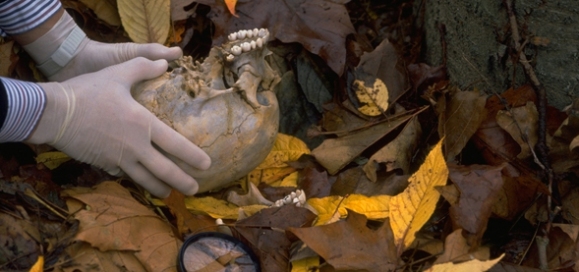Forensic dentistry is not a new science, it has been around since the civil war and refined during the late 1800’s.
We all as dental surgeons know forensic dentistry as one chapter in the subject of ORAL MEDICINE AND RADIOLOGY or in ORAL PATHOLOGY. Is really the scope of forensic dentistry in India just tied up as a single chapter or is it still in budding phase as people saying. What is the reason behind this? Is this because of lack of awareness of government officials regarding the utility of forensic odontology or because of less availability of forensic dentists in India?
In advanced countries like USA, UK forensic dentistry is well recognized and the forensic dentists also provide expert witness in courts. But in India the utilization of forensic dentistry in criminal justice is minimal. This is because the development of this specialty is slow and still its recognition as separate branch is under way. Government personnel, investigating officers, judicial officials aren’t totally aware about this specialty and it is needed to be properly orienting all the officials about the scope and utility of forensic dentistry.
A forensic dentist helps in (1) body identification either it’s a mass disaster or an individual case in which the body was damaged beyond visual recognition which is called dental identification (2) provides expert witness in courts where the forensic dentist analyze the evidence and needed to submit in the court (3) Bite mark analysis (4) DVI (Disaster Victim Identification) and mass disaster management, in case of mass disasters forensic dentists will work individually and also in collaboration with forensic pathologists, anthropologists in order to do the body identifications. In western countries there is dental DVI team which includes a group of forensic dentists which will be readily deployed to the disaster site. (5) Age estimations (6) Abuse recognition (child & adult) (7) Expert evidence for cases of dental clinical negligence.
If we look at the of forensic dentistry in India among all, age estimation is the most common practice by a forensic dentist in which he/she was asked to do the age estimations for child labours or in situations of child marriages where the police ask the forensic personnel to find out the right age whether they are above their legal age or not. Bite mark analysis is also in practice in India. “The forensic odontology department of the SDM Dental College, Dharwad played a vital role in proving guilty all the accused using bite mark analysis in Nirbhaya rape and murder case”
Dental identification is one of the primary means of identification. The other means are DNA and fingerprint analysis. It is one of the most accurate, cheapest and fastest methods to do the identification. It mainly depends on the availability of dental records. Identification is usually done by comparison of antemortem data with the postmortem findings. Availability of these records will make body identification easier. In western countries, dental identification is the most common practice by forensic dentists. This is mainly because of the availability of accurate dental records. If we look at the situation in India there isn’t much importance for dental identification. Identification usually carried out by other means. Is this because of lack of awareness of government officials regarding the specialty of forensic dentistry or because of not knowing fully about the forensic importance of dental records by the clinical practitioners? What is the root for this problem? What needed to be done to increase the scope for body identifications in India?
So it is very important to let know the government personnel, investigating officers, judicial officials about the presence, importance and make them totally aware about how forensic dentistry contribute to judicial system not only in criminal activities but also during disasters involving many fatalities.
In my next post I will discuss more about the importance of dental records, dental identification and what needed to be done to increase its scope in India and will also talk about an incident in which a lot can be done by forensic dentist. 
